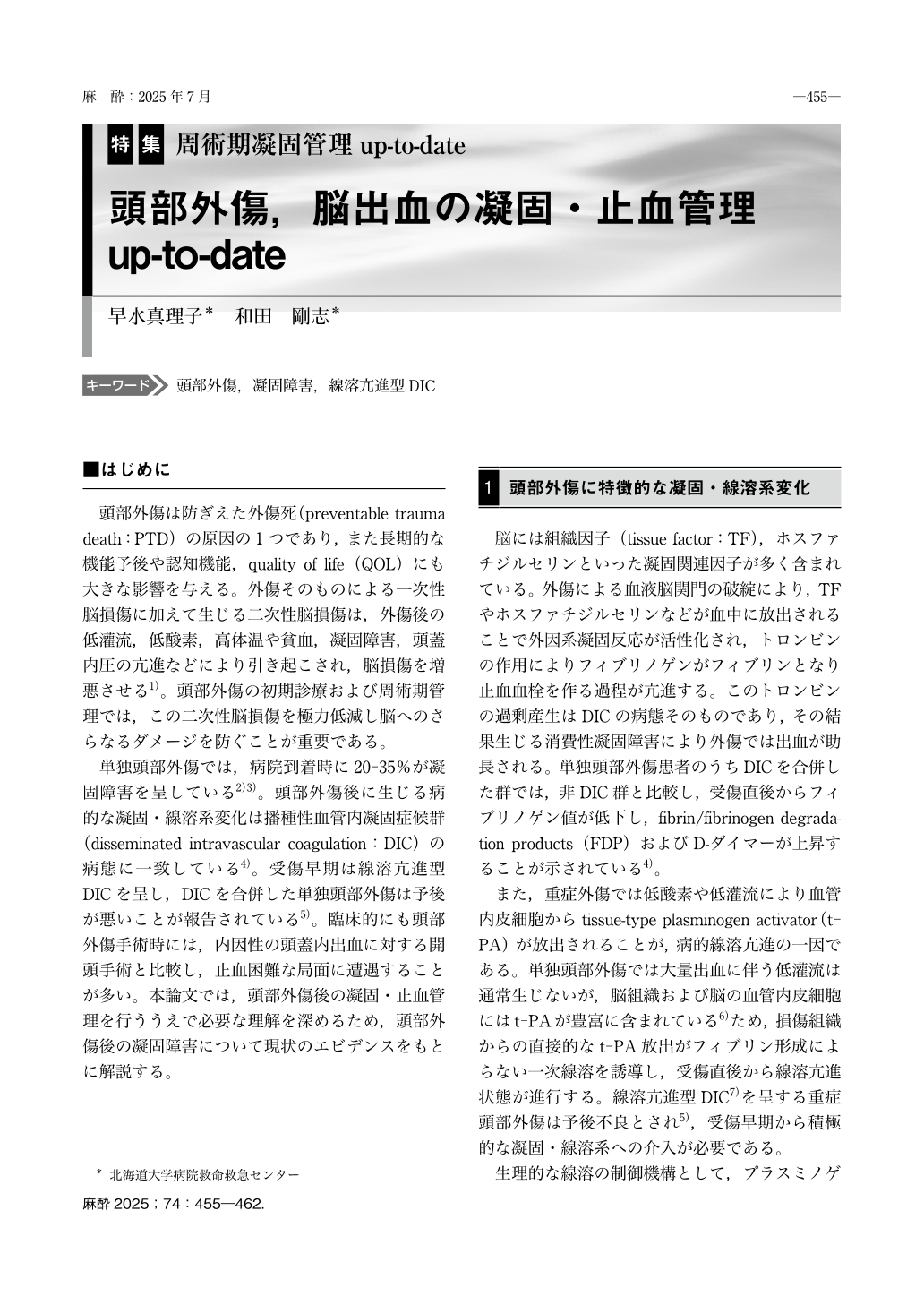Japanese
English
- 有料閲覧
- Abstract 文献概要
- 1ページ目 Look Inside
- 参考文献 Reference
はじめに
頭部外傷は防ぎえた外傷死(preventable trauma death:PTD)の原因の1つであり,また長期的な機能予後や認知機能,quality of life(QOL)にも大きな影響を与える。外傷そのものによる一次性脳損傷に加えて生じる二次性脳損傷は,外傷後の低灌流,低酸素,高体温や貧血,凝固障害,頭蓋内圧の亢進などにより引き起こされ,脳損傷を増悪させる1)。頭部外傷の初期診療および周術期管理では,この二次性脳損傷を極力低減し脳へのさらなるダメージを防ぐことが重要である。
単独頭部外傷では,病院到着時に20-35%が凝固障害を呈している2)3)。頭部外傷後に生じる病的な凝固・線溶系変化は播種性血管内凝固症候群(disseminated intravascular coagulation:DIC)の病態に一致している4)。受傷早期は線溶亢進型DICを呈し,DICを合併した単独頭部外傷は予後が悪いことが報告されている5)。臨床的にも頭部外傷手術時には,内因性の頭蓋内出血に対する開頭手術と比較し,止血困難な局面に遭遇することが多い。本論文では,頭部外傷後の凝固・止血管理を行ううえで必要な理解を深めるため,頭部外傷後の凝固障害について現状のエビデンスをもとに解説する。
Coagulopathy is observed upon admission in approximately one-third of patients with an isolated traumatic brain injury(TBI). In the early phase of such a TBI, the releases of tissue factor and tissue plasminogen activator(t-PA)from brain tissue and the endothelium results in coagulopathy, which is consistent with disseminated intravascular coagulation(DIC)with a fibrinolytic phenotype. Randomized controlled trials have demonstrated the efficacy of tranexamic acid for the treatment of hyperfibrinolysis and reducing mortality in TBI. Fibrinogen levels decrease immediately after a TBI, and a rapid correction of fibrinogen is essential for achieving hemostasis. Although an optimal hemoglobin(Hb)level for TBI patients has not been established, Hb>9.0 g/dL is often applied as a criterion to avoid secondary brain damage. It is essential to reverse the effects of anticoagulants by using specific reversal agents and blood products before an emergency craniotomy is performed. Optimal perioperative management based on an understanding of coagulation and changes in coagulation and fibrinolysis after a TBI is crucial to mitigate secondary brain injury and improve patient outcomes.

Copyright © 2025 KOKUSEIDO CO., LTD. All Rights Reserved.


